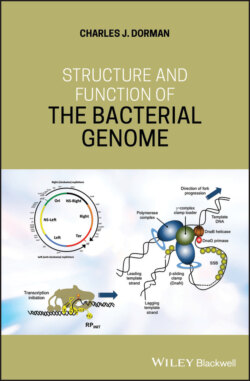Читать книгу Structure and Function of the Bacterial Genome - Charles J. Dorman - Страница 24
1.13 Plasmids
ОглавлениеIn many bacteria, autonomously replicating and segregating genetic elements called plasmids accompany the chromosome in the cell. Like most bacterial chromosomes, plasmids are usually covalently closed, circular DNA molecules, but this is not always the case: some are linear. Certain plasmids are categorised as additional chromosomes (or ‘chromids’) due to their size, their carriage of genes normally found on bona fide chromosomes, their unitary copy number, and/or the coordination of their replication and segregation with the main chromosome (Barloy‐Hubler and Jebbar 2008; Fournes et al. 2018). Other very big plasmids are called ‘mega‐plasmids’ and can encode functions required for symbiosis or virulence (Schwartz 2008). In general, plasmids carry genes that are useful rather than essential, so their loss is not usually fatal to the cell; in contrast, loss of the chromosome is fatal.
Plasmids came to attention due to their involvement in bacterial sex (the Fertility, or F factor) and when it was discovered that they carried genes for resistance to antimicrobial agents, including antibiotics (R factors). Investigations of these phenomena led to the discovery of plasmid conjugation and the existence of other mobile genetic elements such as transposons and integrons. Plasmid studies revealed a wealth of information about plasmid replication processes, segregation systems, and copy number control mechanisms. This field also provided cloning vectors to support the emergence of the recombinant DNA technology that, in part, underpins biotechnology. Plasmid research has provided important insights into gene regulation mechanisms, including the provision of early examples of the regulatory roles of small RNA molecules.
